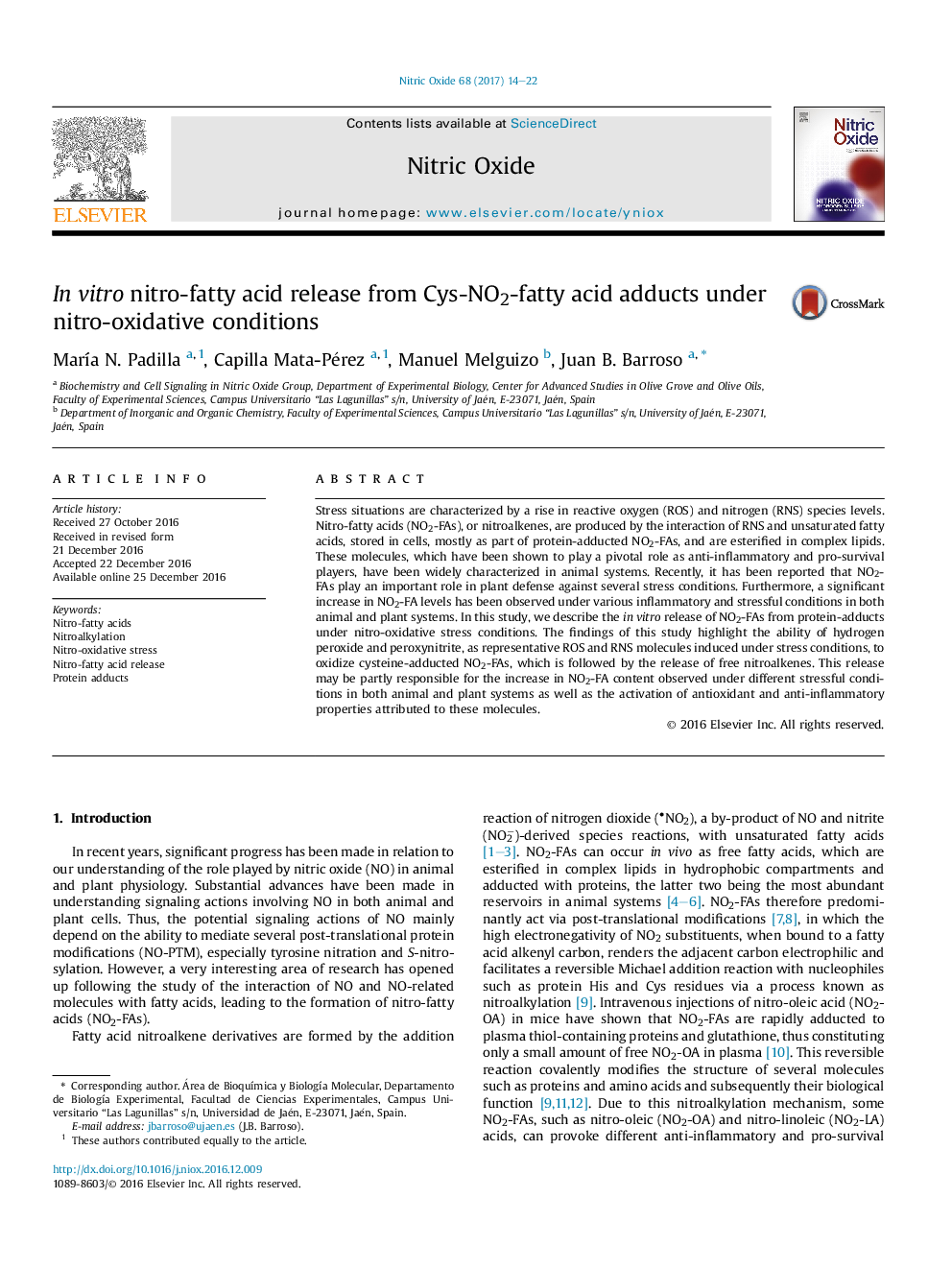| Article ID | Journal | Published Year | Pages | File Type |
|---|---|---|---|---|
| 5514208 | Nitric Oxide | 2017 | 9 Pages |
â¢Highest levels of NO2-FAs have been detected under different stress conditions in both animal and plant systems.â¢The ability of H2O2 and ONOO- to oxidize cysteine-adducted NO2-FAs is followed by the release of free nitro-fatty acids.â¢These free NO2-FAs could trigger the anti-inflammatory, antioxidant and signaling actions in both animal and plant systems.
Stress situations are characterized by a rise in reactive oxygen (ROS) and nitrogen (RNS) species levels. Nitro-fatty acids (NO2-FAs), or nitroalkenes, are produced by the interaction of RNS and unsaturated fatty acids, stored in cells, mostly as part of protein-adducted NO2-FAs, and are esterified in complex lipids. These molecules, which have been shown to play a pivotal role as anti-inflammatory and pro-survival players, have been widely characterized in animal systems. Recently, it has been reported that NO2-FAs play an important role in plant defense against several stress conditions. Furthermore, a significant increase in NO2-FA levels has been observed under various inflammatory and stressful conditions in both animal and plant systems. In this study, we describe the in vitro release of NO2-FAs from protein-adducts under nitro-oxidative stress conditions. The findings of this study highlight the ability of hydrogen peroxide and peroxynitrite, as representative ROS and RNS molecules induced under stress conditions, to oxidize cysteine-adducted NO2-FAs, which is followed by the release of free nitroalkenes. This release may be partly responsible for the increase in NO2-FA content observed under different stressful conditions in both animal and plant systems as well as the activation of antioxidant and anti-inflammatory properties attributed to these molecules.
